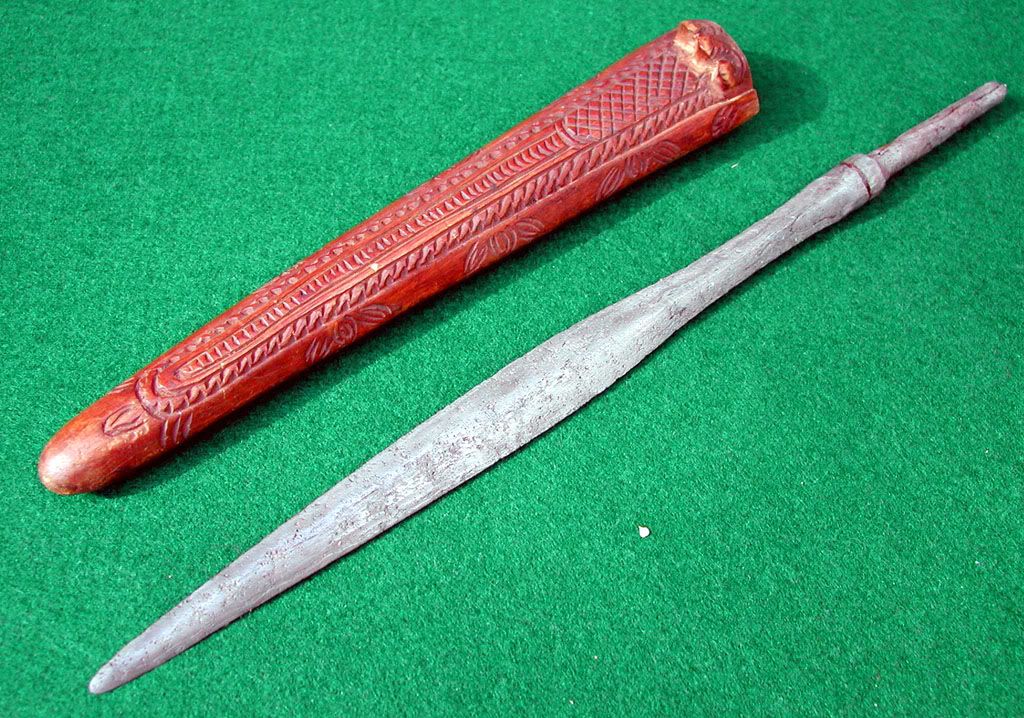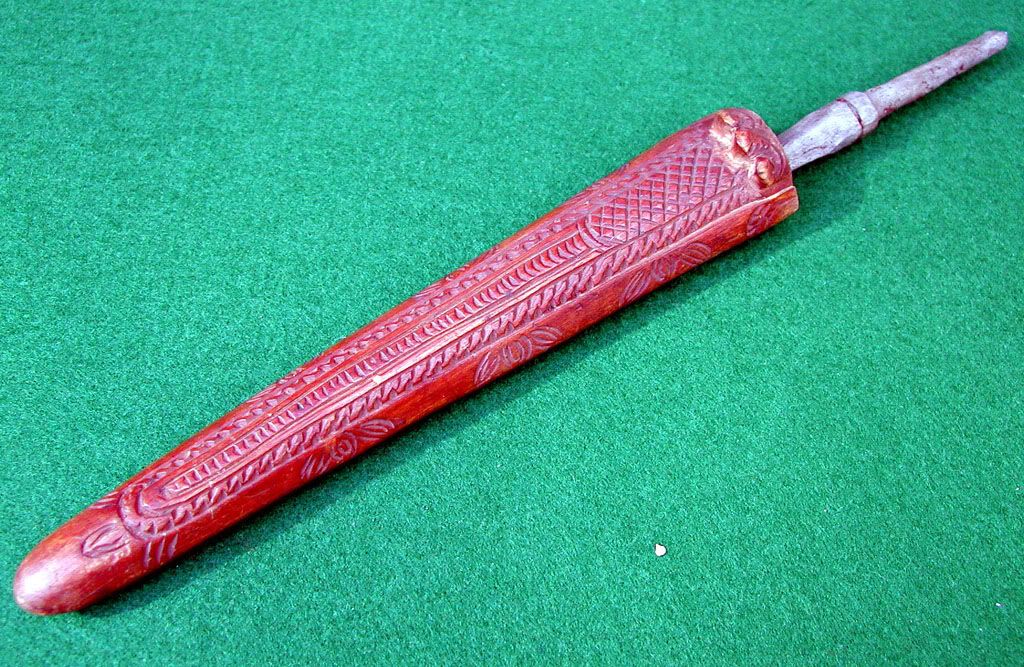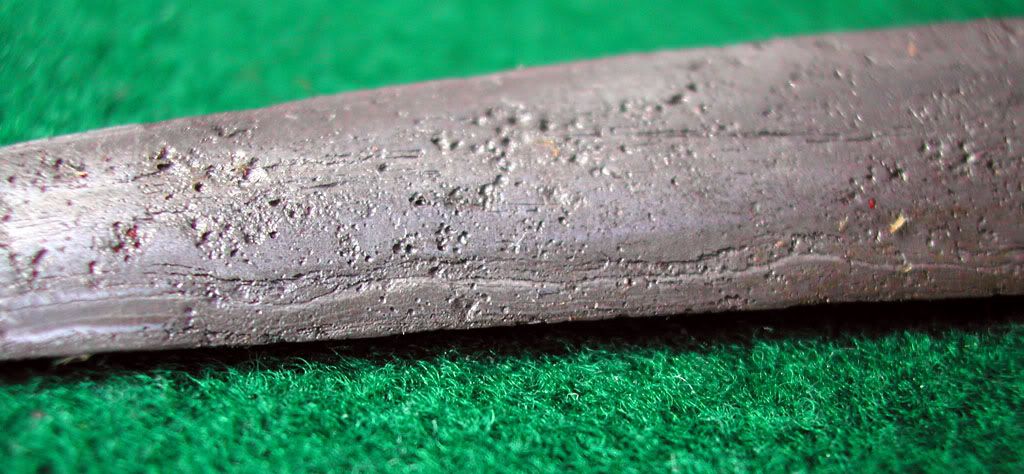
 |
|
|
#1 |
|
Member
Join Date: Dec 2004
Location: Kernersville, NC, USA
Posts: 793
|
Just acquired this piece. Saw similar spearhead cases in Stone's as being Malaysian. Case is carved from a single piece of wood. Blade is 11 3/8" overall including tang. It's forged, and has some pattern, but it didn't show up well with either lime juice, vinegar, or ferric chloride. Any ideas what I have? Thanks,
Steve   
|
|
|

|
|
|
#2 |
|
Vikingsword Staff
Join Date: Nov 2004
Posts: 6,293
|
Hi Ferg , yeh it's an Indo spear head . To bring up the pamor it really needs a treatment with Warangan .
There is another thread here you might read ; keris staining IIRC . |
|
|

|
|
|
#3 |
|
Member
Join Date: Dec 2004
Location: Houston, TX, USA
Posts: 1,254
|
Indonesian, I think, but I think not Javanese, and not neccessarily a mata tombak per se, though if not certainly a close relative. The tang is on the short side, and rather robust and abrupt at the tip; I'd suspect shortening for dagger mounting, but the splitting tip looks original? What's that, like 3 inches? Way short for a tombak or lembing tang, especially with so much more blade; more like unto Moro and other spear tangs; tombaks and lembings tend to have tangs 1/2 or more the length of the blade; on actual small militia mata tombaks per se the ratio is often close to 1:1. The carving on the sheath is much simpler/cruder than I've ever seen on an old one-piece wrongka, and could it be Madurese? The blade appears to be folded or otherwise fibrous, and looks like the typical "sandwich" but I don't know that it has high contrast pamor per se; if you want to "stain" it I guess you'll find out for sure (though be advised that that may well not be usual with a spear blade in the culture of origin, and until/unless we know what culture that is, we won't be able to find out. Most if not all Indonesians have traditionally stained k[e]ris, but not neccessarily other blades.). In other notes; no seperate bolster, and a somwhat odd leafshape to the blade that I've seen on daggers that may or may not have started as spears. Is that all the further it goes into the sheath? If so that's likely the wrong sheath. AFAIK the sheath should cover, or at least meet, the bolster. Here there is an (atypical? or ethnic?) unsharp facetted shaft that is also exposed? This I've seen such shafts on spears from Sumatra and is similar to work at the base of Lumad/Visayan(?) spears' blades, as well though they tend to have shorter shafts, broader blades and to lack the marked off (in this case integral though; yes?) bolster seen on this more Southern work, and the one piece sheath does not seem to go so far North. Mata tombak blade is sharp down to the bolster, and often/usually wider at the base (sometimes suddenly so, as seen on many E African spears, too).
Last edited by tom hyle; 25th April 2005 at 04:34 PM. |
|
|

|
|
|
#4 |
|
Member
Join Date: Dec 2004
Location: The Netherlands
Posts: 1,209
|
The scabbard is in mho a madurese tombak scabbard. The hilt is missing and as mentioned it should be stained with warangan. My guess is a madurese tombak.
|
|
|

|
 |
|
|